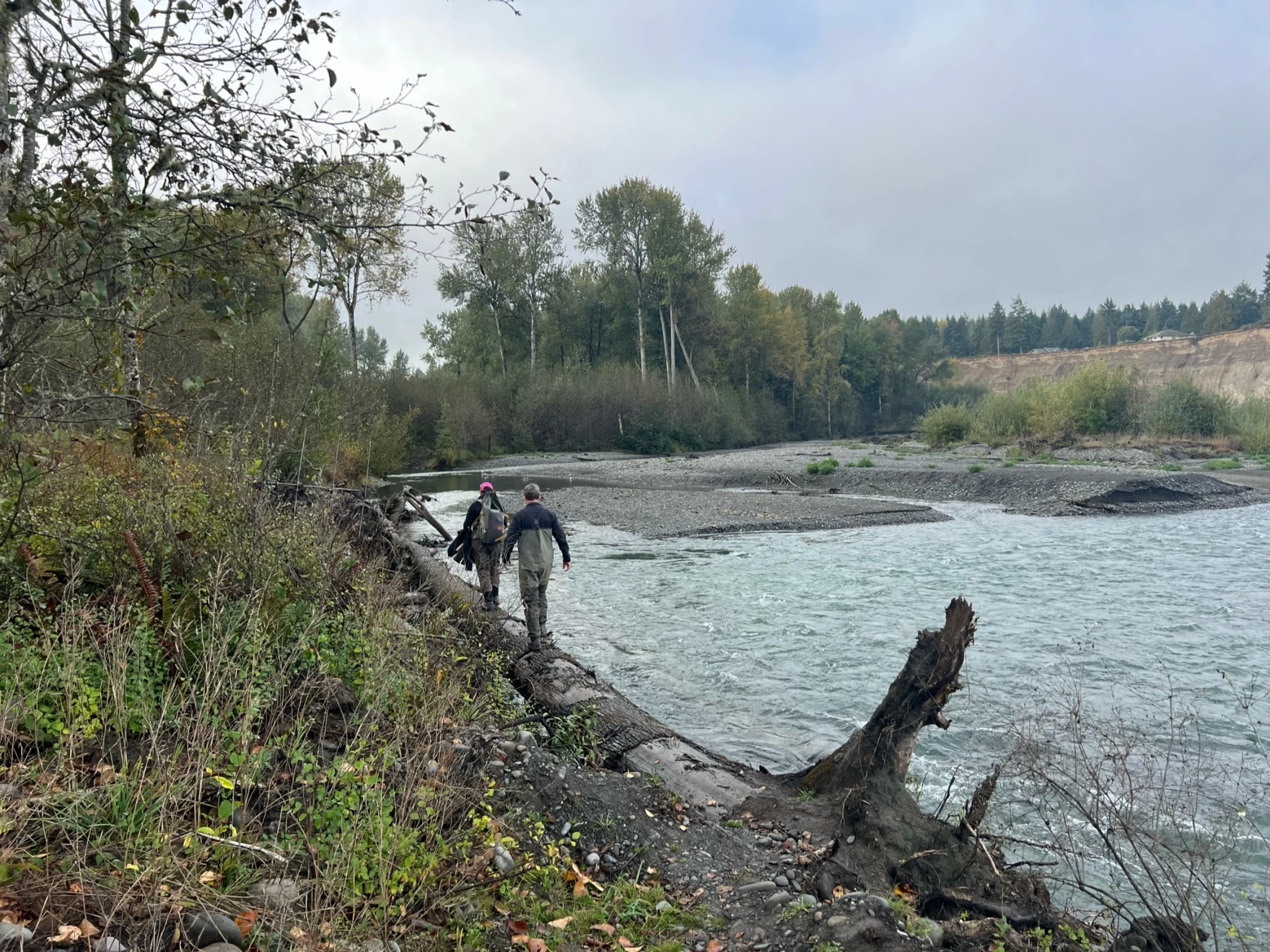

Vanessa Castle and Matt Beirne from the Lower Elwha Klallam Tribe head up the Elwha River to a fishing hole. Bellamy Pailthorp/KNKX
The banks of the Elwha sprawl and meander now. Just up from the river mouth west of Port Angeles, there are braided channels that crisscross the river basin. Soft sediment is underfoot on the walk through the water in waders, crossing sandy islands that didn’t exist before dam removal.
“Yeah, I mean, the river is completely different than we remember it — than I remember it,” said Vanessa Castle, who grew up on this river with her extended family.
She’s an enrolled member of the Lower Elwha Klallam Tribe. Her mom was a commercial fisherwoman, harvesting mostly coho salmon here. The dams loomed above them then, harnessing the river’s flow and preventing the Elwha’s legendary chinook salmon from reaching their spawning grounds above the dams.
Castle remembers, as a kid, seeing the huge endangered fish jump up and slam against the lower dam, trying in vain to get above it.
“But it was a good experience, growing up on the river as a child.” she said. “I was, you know, seven years old and getting paid 25 cents to clean each fish by all of my relatives that we would camp with for weeks at a time at the mouth of the river.”
That was 30 years ago. Eventually, her mother switched to saltwater fishing to make a better living. Others switched to neighboring rivers. And after they won the fight for dam removal, the tribe voluntarily imposed a moratorium on all fishing on the Elwha, and then extended it twice.
Castle, who now works as a natural resource technician for the tribe, says the 12-year moratorium was necessary to allow the fish to recover. But it created a cultural disconnect in the next generation.
”We have a whole group of children — or young adults now — that have never been out here and have never fished the river.” Castle said.
“And so we’re having to re- teach them, and instill those lessons that we’ve been taught. About [things] like sustainable harvest and the way that we treat the fish — just our tribal customs and our culture.”
At the main fishing hole beneath a huge bluff, several tribal members are casting for coho salmon. The fishery, a limited ceremonial and subsistence fishery, is only allowed on the lower three miles of the river and anything that’s not coho […]
Full article: www.ijpr.org
Clean water is essential for life, yet millions of Americans unknowingly consume contaminants through their…
Human brains contain higher concentrations of microplastics than other organs, according to a new study, and the…
From the Office of the Governor: In anticipation of a multi-day, significant atmospheric river in Northern California,…
From Governor Newsom: Scientists, water managers, state leaders, and experts throughout the state are calling…
Photo: A harmful algal bloom in Milford Lake, Kansas, made the water appear bright green.…
An expanded plastic foam coffee cup is at a donut shop in Monterey Park, California.…